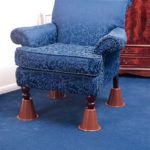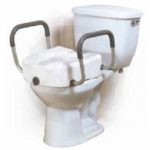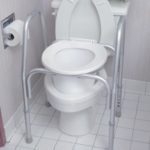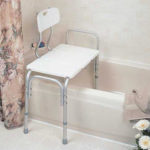Environmental Changes
When helping a person with memory loss/dementia, you must remember that you can not change the person. We can only change our approach, the task at hand, or the environment.
How do you change the environment to help adapt for these new changes?
The main areas that can be problematic are bathrooms, kitchens and bedrooms.
Other areas in the home that many people struggle with include: getting up and down from chairs, toilets, couches, beds, etc.
Problems arise when a person attempts to sit down and suddenly drops (this issue is most prominent in lower toilets, causing a person to hit the seat hard.) It also takes a lot of strength to get back into a standing position from a lower surface. If you see these potential hazards around a loved ones home, we recommend looking at ways to raise the surface. Pictured below are an assortment of furniture risers and bedside commodes over toilets. Having arm rests on chairs can also be a helpful additions.
Grab bars can be extremely helpful for a person who has limited ability to raise themselves up with just their legs. Shower chairs can also be helpful. If your space is limited, don’t forget that you can turn the chair backwards, allowing more room to step over the tub.




A person with dementia will tend to lose things or misplace things. Reducing clutter in the house enables your loved one to find things easier. If things are moved around by a person with dementia, they may have a difficult time determining what these objects are used for in the future. Having just the necessities, such as a toothbrush and toothpaste on the counter, reduces the ability to use the object incorrectly.
Another way to help a person with dementia in the home is to block unneeded information. Example: cover all extra buttons on the microwave or remote control, only leaving the needed ones visible.

It is important to remove any trip hazards around the home for a person with memory loss. Many times, the brain has to take more time to interpret the visual information in our environment, making it difficult to see things.
Lighting can also have a huge impact for an individual with memory changes. Sometimes they can no longer remember where the light switch is, or know when they should turn on the light. There are motion activated lights that can be installed in the home. Some are permanent, which will need an electrician or handy person in your family to install. There are also lights that can be screwed into your light fixtures that will do the same thing.


